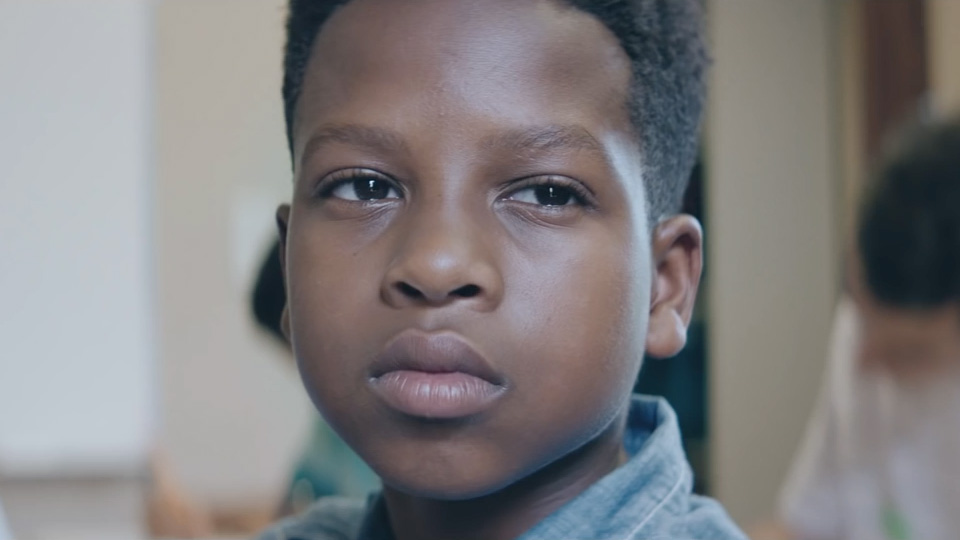If you've ever wondered about the effect that the increased frequency of mass shootings has had on the lives of young children, and how it can impact their day-to-day lives, this remarkable music video from Everytown for Gun Safety and Andrew Bird will clarify that.
The six-minute video, directed by actress Natalie Morales (Girls, Parks and Recreation), follows a young boy throughout his day and show how the extreme gun violence in Chicago—and all across America—has permeated classrooms and young lives everywhere.
That the video's narrative isn't about an extreme event, but about the routine of any child and how lockdown drills have become normalized in American schools, is intentional, according to Morales, who spoke with AdFreak about her film.
AdFreak: What was your intention with this music video?
Natalie Morales: I didn't want it to be over the top, nothing too on the nose, but I wanted it to—I feel like people who don't necessarily have kids, or even people who have kids, they don't necessarily know what goes on in these lockdown drills. When I was growing up we had fire drills and we didn't have to walk past memorials of people who had died in a fire. [Walking past memorials to the victims of gun violence] is a very real reality.
Even when people had bomb drills back in the day, the idea was that some foreign enemy was going to bomb you and that you would disappear, not that you should mistrust the kids sitting next to you or that someone you know is going to come in and shoot you and your friends. It creates an entirely different environment for kids growing up today, and the idea that this is normal is what I wanted to explain to people. I hadn't seen that shown anywhere, that this is such a normal everyday thing, because I think we don't notice that kids are growing up this way.
How did you conceive of and prepare for the shoot?
Everytown reached out to me and said they had been working with Andrew Bird and wanted somebody to direct this video for his song—that it would be in collaboration with him. They hooked me up with Andrew's manager, and Andrew and I sat down. They basically didn't have any guidelines for what they wanted us to do. They said, "Here's the song, and we want to use it for something, so have at it." Andrew and I sat down and hashed out a general idea for a concept.
I did a lot of research on these lockdown drills. Different schools do them different ways. Some people do it very excessively, some people simulate actual guns, some people have kids participate and do fake gunshots and have fake bodies on the floor. We all agreed that we wanted to it be the version that is applied the most in all these lockdown drills, the most toned-down version of it, which would be for an elementary school or a middle school … so that people couldn't say, "That's the excessive" or "That's the extreme version of it." We didn't want that to be the case. At its most toned down, this is what happens every day in schools. I had no idea.
Is the film set in Chicago because of the level of gun violence there?
The song isn't necessarily about gun violence or anything happening in Chicago—Andrew is from there—but it is an ode to Chicago, and we just thought it really needed to take place there. Setting it in Chicago and having the song be distinctly about Chicago is one thing, but I didn't necessarily want the video to be too Chicago—I didn't show the Sears Tower—because I wanted it to feel like it could happen anywhere, and it is happening everywhere. It's happening a lot in Chicago, but it's also happening a lot all over.
So the film is more about how this is the new normal?
The extreme events are all around us, and they have changed our everyday lives. What's so insidious is that we haven't really noticed it, and we haven't really noticed it in terms of our children, either. We think our children are living the same lives that we are, but they are definitely, definitely not, even when nothing extreme is happening, even when it's just a regular day at school. I wanted to highlight a day in the life of a kid in the United States, and that's exactly what it's like, especially in that city.
Is there anything else about the production of the video that we should know?
All of the memorials that we shot are real. They all exist in Chicago. While we were shooting it, there were a lot of moments where I was tearing up because we were shooting on the street and there was a kid just like our kid with a backpack walking home from school [past these memorials]. So we were shooting the exact same thing that was happening all around us, and it was really sort of impactful and crazy.
Hadiya Pendleton, she's the reason the Wear Orange campaign started—I didn't notice until I got there that the last memorial we went to had her picture on it. And that's why he had an orange backpack on in the film. It was really impactful that her memorial was there, and that we were shooting this there.








